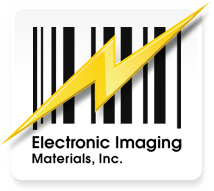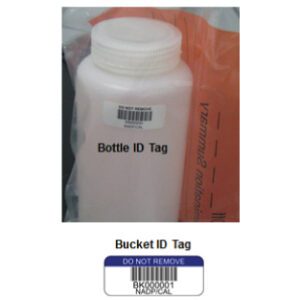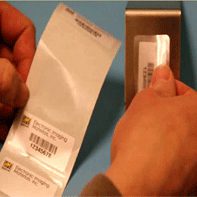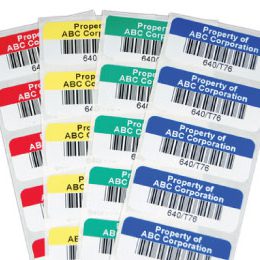Your lab depends on accurate, readable labels to keep thousands of specimens and test results organized—especially if you’re using sophisticated Hologic® equipment for women’s health or other high-stakes diagnostics. The label printing method you choose can make or break your workflow. If a barcode is smudged or a label peels mid-process, you’re facing potential re-tests, compliance headaches, and unhappy technicians.

Enter thermal labels, a solution often hailed as the gold standard for durability and performance in demanding lab environments. In this guide, we’ll compare thermal vs. laser labels for Hologic systems, highlight their pros and cons, and help you determine which printing method fits your lab’s unique needs.
Why Your Printing Method Matters More Than You Think
Label printing might sound like a minor detail—until one fails at a crucial moment. Hologic systems operate with minimal margins for error, scanning barcodes precisely and handling large volumes of specimens. Your labels need to remain crisp, intact, and scannable throughout every stage of testing.
Laser Labels
Historically, many labs have relied on laser printing, which can produce bright, high-resolution text. But laser label printing relies on fusing toner onto paper or synthetic media using heat. That process can be tricky for certain facestocks, particularly those requiring specialized coatings.
Thermal Labels
Thermal labels (particularly thermal transfer) produce consistently high-resolution images that resist smudging and chemical exposure. A resin-based ribbon is heated and transferred onto the label surface, forming an image that endures. This method excels in labs needing robust, long-lasting labels that can survive anything. If your Hologic machines require multiple scans or you’re storing samples in less-than-ideal conditions, thermal labels often deliver the durability you need.
Thermal vs. Laser Labels: Key Differences for Hologic Performance
Choosing between thermal and laser labels is about matching your labeling method to the demands of your Hologic systems. Below, we break down the key performance differences that can impact everything from scan accuracy to long-term durability in your lab.
Printing Process and Durability
The method you use to apply text and barcodes directly affects how well the label performs under actual lab conditions. Here’s how thermal and laser printing compare regarding resilience and longevity.
Laser Labels: They use toner that is fused onto the label using intense heat and pressure. While the print quality can be sharp, toner adhesion may weaken when the labels are subjected to alcohol wipes, harsh chemicals, or repeated handling.
Thermal Labels: Particularly in thermal transfer, the resin ribbon bonds chemically with the label’s surface. This creates a bond that generally outperforms toner-based prints when exposed to mechanical abrasion or chemicals—crucial in labs handling biohazards or cleaning agents.
Material Compatibility
When discussing thermal vs. laser labels, it’s vital to consider how each method interacts with synthetic materials. Many Hologic-compatible labels are made from polypropylene or polyester to withstand the friction and movement of the device’s scanning components.
- Laser Printing Limitations: Some synthetics can warp or melt under a laser printer’s heat, leading to inconsistent print or label curling. If the substrate isn’t laser-approved, you may experience jams and color irregularities.
- Thermal-Optimized Materials: Thermally receptive coatings are designed to transfer heat from the ribbon, often providing consistent, stable image quality. They can maintain high contrast, so barcodes /remain easily scannable even after repeated exposure to mechanical stress.

Greg D. | Hologic
“EIM receives the “Label Vendor of the Year” award for the best label in a label eval drama. I wish all the customers used labels this nice.“
Alignment and Throughput
Hologic systems scan barcodes at various stages to track specimens meticulously. This means label alignment, print clarity, and sheet feeding (if you’re using sheet labels) must be precise.
- Laser Printers: Often require sheet-fed media, which can shift slightly if the printer rollers are worn or if humidity affects the paper. That misalignment could cause misreads.
- Thermal Printers: Typically use roll-fed media that maintains consistent tension and alignment. Calibrating your thermal printer with the correct label size helps you achieve near-perfect print batch after batch.
Common Lab Use Cases for Each Method
Not all labs have the same labeling demands. Depending on your environment, sample volume, and equipment, one printing method may serve you better than the other. Here’s where each option typically fits best.
When Laser Labels Might Work
Laser labels can suffice in simpler lab environments where:
- Volume is low and your staff can afford to reprint if something goes wrong.
- The environment is relatively controlled, with minimal chemical exposure.
- You’re labeling items for short-term use and immediate scanning, reducing long-term durability needs.
However, once you introduce the complexity of Hologic machines, the risk of smudging or printing inconsistencies rises—especially if your lab contends with frequent cleaning protocols or tries to push through a high volume of samples.
When Thermal Labels Excel
Thermal labels shine in labs handling significant sample throughput under strict performance standards:
- Hologic Equipment: These machines often demand repeatable, high-quality scanning, making robust, thermal-printed barcodes essential.
- Long-Term Storage or Freezing: Thermal transfer labels with specialized adhesives can handle ultra-low freezers or cryogenic storage without peeling or fading.
- Chemical-Heavy Environments: If your staff regularly disinfects surfaces or your samples are chemically processed, thermal labels typically remain intact far better than toner-based alternatives.
Not sure how to match your current setup with Hologic’s equipment demands? Reach out to Electronic Imaging Materials (EIM) for a personalized assessment. We’ll help you determine the optimal approach.
The Impact on Hologic Machines—Why Choose Thermal?
Now, let’s cut to the chase: Hologic’s advanced analyzers and sample-handling systems require reliability. If your barcode becomes unreadable mid-process, the entire test run might stall, or you might need to re-label everything. With thermal printing, you gain:
- High Resistance to Smudges and Chemicals: Perfect for labs that handle hundreds of samples a day or frequently sanitize surfaces.
- Consistent Print Quality: Each label looks the same from the first to the thousandth, crucial for scanning accuracy.
- Reduced Downtime: Less chance of jammed printers or misaligned barcodes means you keep your Hologic system humming.
While laser labels might appear cost-effective on paper, labs often discover that consistent scanning failures or reprints cost more time (and money) in the long run.
Making the Switch From Laser for Printer & Label Alignment
Switching from laser to thermal printing is a shift in how your lab handles labeling from end to end. Here’s what to consider when aligning your printers and materials for long-term success.
Different Equipment Requirements
Switching from a laser setup to a thermal printer isn’t as simple as changing labels. You’ll likely need an entirely different printer model, plus new label rolls crafted for thermal transfer. But the payoff can be immense: better readability, fewer misprints, and improved longevity.
Material and Adhesive Compatibility
Thermal printing often demands synthetic label facestocks that seamlessly fuse with resin ribbons. If your existing inventory is all paper-based (for laser printing), you may need to discard or repurpose them for non-critical tasks. Once you align your materials with a thermal printer, consistency and reliability typically surpass laser methods, especially in challenging lab environments.
Key Considerations for an Optimal Match
Switching from laser to thermal printing is a shift in how your lab handles labeling from end to end. Here’s what to consider when aligning your printers and materials for long-term success.
Choosing the right label-printing method for your Hologic system is about finding a solution that supports compliance, withstands your lab environment, and grows with your needs. Here’s what to keep in mind.
Compliance Needs
Stringent healthcare rules prohibit the use of flimsy labels that fade or peel before the data retention period ends. Thermal printing offers better control over print permanence, enabling you to meet or exceed labeling guidelines.
Lab Environment
Assess factors like temperature, humidity, and chemical exposure. If your space has high moisture or your workflow includes repeated disinfecting, you need labels that hold up under these conditions—and thermal printers excel at producing them.
Future Scalability
If you plan to expand or automate more processes with Hologic machines, pick a label printing method that accommodates growth. Thermal printers with robust capabilities often adapt to new barcoding or data capture requirements without a major equipment overhaul.
Partner With EIM to Optimize Your Hologic Labeling Strategy
Electronic Imaging Materials (EIM), we create high-performing labels that tackle every inch of your lab’s workflow. Whether you’re upgrading from laser labels or fine-tuning an existing thermal system, our team understands the demands of Hologic equipment inside and out. Ready to see how thermal labels can transform your lab’s Hologic workflows? Reach out, and let’s start building a labeling strategy that keeps your samples secure, your barcodes legible, and your tests on track.





